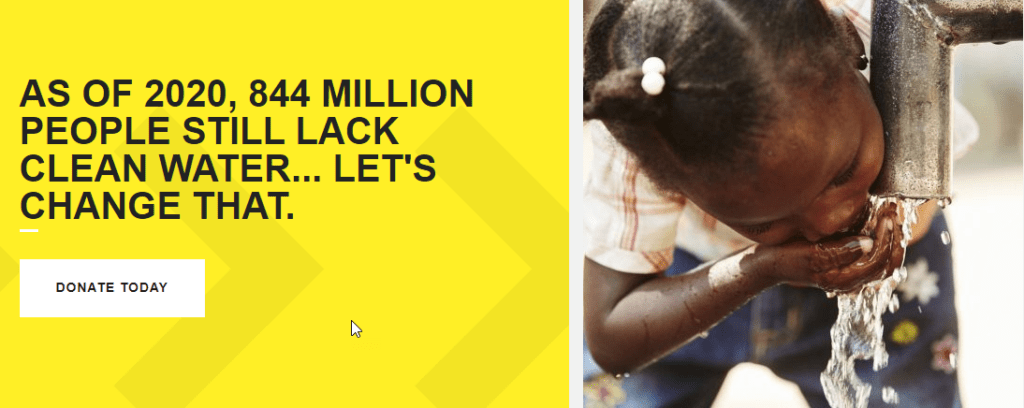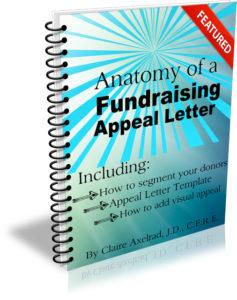 Whatever side of the political spectrum you’re on, the photo below is triggering.
Whatever side of the political spectrum you’re on, the photo below is triggering.
https://www.bbc.com/news/world-us-canada-58654351
Note: I can’t show you the photo because it’s copyrighted, but if you click on the link you’ll recognize it immediately (unless you’ve been living underground over the past week).
Why am I sharing this photo I can’t even show you?
I want to make an important point.
One I feel too few nonprofits give much thought to.
Could you be among them?
If so, I don’t fault you. No one teaches us these things.
Most of us didn’t go to journalism school.
But, let’s face it, journalists really do know how to grab attention!
You want to grab attention with this year’s fundraising appeal, right?
Okay then.
I’m going to share a simple tip that will boost your fundraising returns this year by leaps and bounds.
Again, it’s super simple.
But you’ve got to start now. Or maybe even yesterday.
Are you ready?
When writing this year’s appeal letter, spend more time on your photo.
In fact, find your photo before you begin writing your appeal letter.
Don’t write a story, then search to find a matching photo. You’ll end up with an inferior photo. And what people see will supersede what they read. That’s just how it works. We are wired that way.
It’s why we have the adage a picture is worth 1000 words.
In fact, studies have shown we process images faster than text, and images combined with text generate 94% more views than just text alone. Plus people retain 65% of the information they can pair with an image versus 10% of information they read.
Please allow this to sink in, because it’s huge.
It means most of us fundraisers are doing everything backwards!
FULL CONFESSION: Back when I worked in the trenches I did spend a lot of time searching for and reviewing photos. But it was always after the fact. I would ask my Marketing Director to find me some photo options. She would search stock photos. Sometimes she’d even hire a photographer. And then I’d have half a dozen options. It usually was close to the deadline, and I had to pick something within a relatively short timeframe.
Sometimes it was pretty good. Sometimes just OK. But, if I’m honest, it was never the most triggering photo. The one that shot straight to the heart. The one that, even standing alone, would probably have delivered almost as much punch as the entire rest of the appeal.
I know now that was a big mistake.
Please learn from me.
Here’s how to collect triggering photos
You want to be ready to pull the trigger when it comes time to sit down and write your most compelling fundraising appeal. You really won’t be adequately prepared to do so unless you have a photo in mind. So here’s what you should do, starting today:
- Carry a camera with you everywhere. This is easy in the era of cell phones. With pretty darn good cameras too! Use your cell phone’s camera. Carry release forms with you in your purse, pocket, backpack or briefcase. You may not need a release when your purpose is not commercial, but check out the rules and learn a system for implementing a plan here. Here’s a sample release form from Meals on Wheels.
- Ask program staff to carry their camera with them everywhere. Repeat all of the above.
- Hire a professional photographer, ideally quarterly or at least biannually, to take photographs of your work in action. Make sure they also carry release forms.
- Subscribe to several free photo services. Find options here, here, and here. Once a month scour them for compelling images related to what you do. For example:
-
- Sad dog
- Big eyed child
- Polluted river
- Homeless family
- Man in wheelchair
- Sick baby
- … and so forth.
Save the photos that tell your unique story.
These should be ones that barely require a caption to convey what is going on. Also make sure the photos you save reflect your organizational values. For example:
-
- You may want to home in on photos that show diversity and inclusion through a wide range of ethnicities, locations, abilities, economic situations, skin tones, ages, genders, and circumstances.
- You may want to run your photos by several different people, asking the question “How do these photos convey our vision and mission?”
Compile these “winners” into labeled file folders on your computer.
You can also insert them into hard copy files. Do what works best for you. Your goal is to be able to easily look for them whenever you’re creating a marketing or fundraising campaign.
Here’s how to choose triggering photos
Compelling, emotional photos are your best ammunition. You want to keep a healthy stock of them for when they’re needed. Think about recent photos you’ve seen in the news, on social media, billboards or in magazines. What stands out? What caught your attention? Which of them are memorable and why? What emotions did they cause you to feel? For fundraising appeals, your best bets are:
-
- Sad photos of people or animals who appear to be in desperate need.
- Shocking photos showing real things happening your average reader will want to end.
- One person is usually better than more.
- People are usually better than things. Your readers yearn for human contact.
- Faces, especially with big eyes staring directly into the reader’s eyes. Your readers yearn for human connection.
- People looking human, vulnerable, resilient and filled with character. Don’t choose photos that might be seen as diminishing or humiliating.
- Two people interacting, especially where one is helping the other.
- Close-ups with tight frames and very little white space; emptiness does not generally tell a story (unless you’re trying to depict the aftermath of a climate event or other Armageddon).
- Photos that show a context. Captions can add a lot, but a good photo could also stand alone if necessary.
- Photos in bright colors and good lighting. These are simply more compelling than dark, shadowy or blurry images.
NOTE: There are exceptions to every rule. What works for one nonprofit may not work for another. Your best bet is to A/B test one photo against another (e.g., happy vs. sad; old person vs. young person).
Once you’ve chosen the photo, you’re ready to write – but not before.
When you sit down to write a compelling, resonant, emotional message for a fundraising appeal, begin with the photo. Once you’ve slected a really good one, load it up, and pull the trigger (so to speak). You’ve likely got more than one barrel in your chamber — multi-channel fundraising campaigns offer the biggest bang for your buck – so pull the trigger multiple times. And plan for different types of copy depending on the messaging medium you select. Here are some guidelines to help you craft your very best campaign:
-
- Don’t over-edit the photo. Authenticity is paramount. Don’t go overboard changing lighting and coloring. And keep in mind images scale gracefully from large to small, but not the other way around. You want to avoid grainy, pixilated photos. It’s great, however, to simply crop the photo to put the main subject in a focal part of the frame (for more on how to do this, see here).
- Place the photo up into the right-hand corner of your appeal – a place where eye-motion studies say people tend to look first.
- Don’t make the photo too small. Thumbnails won’t capture attention or connect emotionally, so it’s a waste of a beautiful tool. A good guideline is to keep the photos more than 40% of page width.
- Also consider using the photo on your website. it’s useful to use consistent imagery throughout your campaign
- Also use the photo in your email appeals.
- Use the photo on any advertising you do.
- Use the photo on social media. These are great mediums where photos can lead, since space for text is limited. In fact, some platforms like Instagram and Pinterest are all about photos/images.
- Maybe add the photo to your remit piece and/or donation landing page. Note that you’re still in appeal mode here, so don’t yet switch to a happier photo that shows the donor what they accomplished through giving. Save that for the thank you letter and/or thank you landing page.
- Always add a caption. Even though a good story photo may not need one, I’ve rarely found a situation where a caption doesn’t add value. If you’re stuck for what to write, think of the journalist questions: Who, What, When, Where, Why and How. Also, the caption doesn’t have to fall below the photo. Consider superimposing it right on the photo (see example below). Just make sure you don’t use white or pale text or superimpose it on a busy photo that makes the text hard for people to read.
Don’t just take my word for it.
Here’s what other social benefit organizations have done, and what different fundraising and copywriting experts have to say on the subject:
Abby Jarvis of Qgiv says “There’s more to fundraising images than choosing a random picture to accompany your communications. A little strategy goes a long way; choose images to create an emotional journey for your donors!”
Jeff Brooks says “Ask yourself if the image tells the same story as the words. So often, there’s a vast disconnect between the words and the images in fundraising.”
Tom Ahern says use “an offer coupled with a great photo that takes advantage of eye-contact (get to know Dr. Siegfried Vögele’s eye motion research).” He shares this photo in a school hallway of a typical student served by this particular charity (you can see the full appeal accompanying this photo here.). It’s a long one, but apparently it fared very well.

The folks at Classy say take advantage of Instagram campaigns as “a great opportunity to drive engagement through the simple act of sharing visual content.” They share a campaign for “Pencils of Promise” using multiple images, each of which tells a story.

Here’s another story + complementary call to action from the generosity.org website. You can see they barely need any additional copy to draw folks in and move them to action. The photo is emotional, and the CTA makes the donor the potential hero of the story.

Using trigger photos is not manipulative.
Done well, there is nothing unscrupulous, abusive, violent or selfish about using provocative images in fundraising appeals. It’s just smart use of the most effective resource available to get the job done.
I know you’re smart, or you wouldn’t have read this far!
The job of the smart fundraiser is inspiring passionate philanthropy to make people’s lives better.
This may be done one person, one family, one tribe, one community, one state, one country at a time. Or, who knows, maybe you’ll save the entire planet!
Photos can help. A lot.
So, smart fundraiser: Look at your current plans for your upcoming fall, Thanksgiving, GivingTuesday, holiday, and year-end fundraising appeals. Look at what you’ve got planned for all your supportive messaging channels as well.
- Do you have the tools you need?
- Do you have a plan in place to put those tools to their most effective use?
- Are fundraising and marketing collaborating to assure you have consistent branding?
Are you pulling the trigger?
Want to Learn More to Develop Your Most Compelling Fundraising Appeal?
 Please grab Anatomy of a Fundraising Appeal + Sample Template.
Please grab Anatomy of a Fundraising Appeal + Sample Template.
This is a simple, yet incredibly thorough, 62-page step-by-step guide to crafting a killer appeal letter or email appeal. It’s not just a breezy 2-page form, like what you’ll find elsewhere.
Because writing a compelling fundraising letter can be tricky. It’s not the same kind of writing as a brochure, annual report or grant proposal. But it’s not rocket science – it’s something you can easily learn. It’s just not something most of us are taught.
And that’s where this nifty e-Guide comes in! Plus if you’re not happy for any reason, you have my 30-day 100% refund guarantee. So… nothing to lose. Why not raise more money this year?!
Photo by Johannes W on Unsplash





